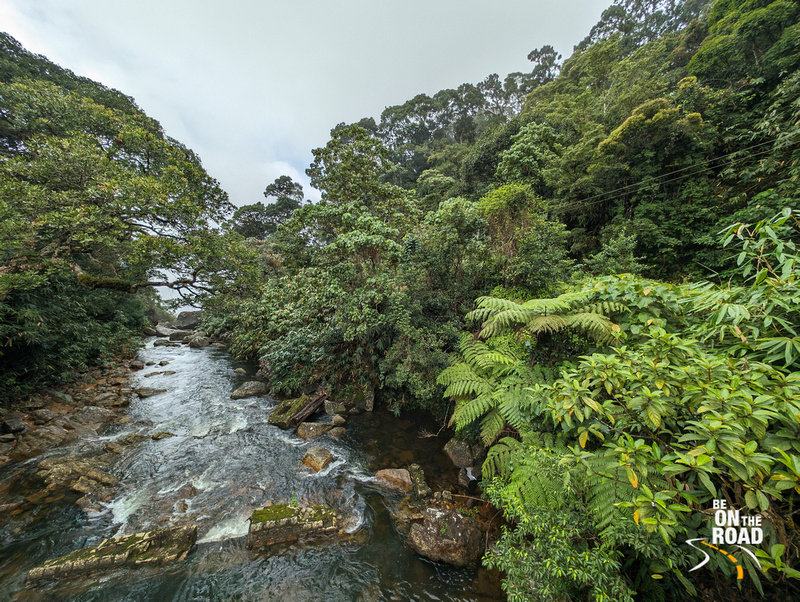Festival of Thiruvathirai from a Traditional Tamil Nadu Village: A Photo Series

The festival of Thiruvathirai celebrates the birthday of Lord Natarajar (the dancing form of Lord Shiva). The festival is celebrated in the Margazhi Tamil month (December 15 to January 14) every year. It is a 10 day celebration that culminates on the full moon day (pournamasya) in the Margazhi month and that also happens to be the day when the moon is transiting through the Ardra nakshatra, the favourite nakshatra of Lord Shiva. During the first 9 days, rudra homam and other yagnam are done at the temple and each day the god and his consorts are decorated and taken to the streets on different vehicles (vahanam). On the final day of Thiruvathirai, festivities begin at 4 AM. All the temple gods are bathed in different spices, aromatic herbs and milk. Then, they are decorated. Then, the action shifts to a separate room in the temple, where Lord Natarajar and his consorts are given abhishekham, alangaram and maha mangalarti. The, they are taken to the streets in a large rath and they stop in front of each house so that the people of that house can give their offerings to the lord (fruits, coconut, vastram (clothes), betel leaves, etc.) and in return receive prasadam and the lord’s blessings. Somewhere during this rath yatra, the lord enacts a tandav (cosmic dance). The whole 10 days of this festival is full of intricate rituals, pomp, colour and glamour.
The cosmic dance of Shiva represents five activities – creation, protection, destruction, embodiment and release. In essence, it represents the continuous cycle of creation and destruction. This cosmic dance takes place in every particle and is the source of all energy. Thiruvathirai festival celebrates this ecstatic dance of Lord Shiva.
Kali and Thalagam is the main food offered to the lord on the festival day and it is later enjoyed by the devotees. Kali is prepared using rice, jaggery, moong dal, coconut and ghee. Thalagam is a vegetable broth that is prepared with the following vegetables – pumpkin, ash gourd, broad beans, sweet potato, potato, brinjal, colacasia, yam and plantain.
I got to experience all of this for the entire duration of the 10 day festival at the Chidambareswarar temple in the village of Kallidaikurichi in the Tirunelveli district of Tamil Nadu. This village nestled at the foot of the Western Ghats offers you a traditional experience of this fairly lesser known festival. I hope you can enjoy some flavour of these 10 festive days through this photo series. Detailed articles will follow soon.
Above photo: Lord Natarajar is taken on a goratham through the agraharam streets of Kallidaikurichi village. This is the only time during the festival that the lord graces his presence during the day. During this rath yatra, Lord Natarajar also enacts his tandav nach or cosmic dance by doing three fast rounds at the junction of two streets.

Above photo: Lord Natarajar takes to the streets of Kallidaikurichi on his favourite vrishabha vahanam (vehicle of the bull). Every evening at around 6 PM, the lord takes to the streets of the Kallidaikurichi village on the first 9 days of the festival.

Above photo: This is the final evening ratham where Lord Natarajar poses as Ganganadhanathar where he carries all the tools required for carrying out daily work and he comes along with a small vessel seeking alms from his devotees. This also happens to be the biggest evening ratham.

Above photo: Lord Natarajar at Chidambareswarar temple is all beautifully decked on the day of Thiruvathirai. As Lord Natarajar was born on this day, he is also known as Athiraiyan after the star on which he was born.

Above photo: Lord Natarajar and his consorts after the abhishekham and alangaram on Thiruvathirai festival day. Literary and historical evidence in the form of stone inscriptions state that the festival has been celebrated on this day for more than 1500 years.

Above photo: Lighting the lamps for the Mahamangalarti. Attending this festival in a small village temple allows you to see and understand all the things that go behind the scenes. Such things get missed when you are a bigger temple due to larger crowds and more noise.

Above photo: Different spices, aromatic herbs and cooling powders are added to the water prior to bathing the gods. Each of these powders make the bathing process a sight o behold as these rich colours perfectly contrast the pancha loha utsava moorthy or the black statues in the temple.

Above photo: On Thiruvathirai day, Lord Natarajar has left the temple premises on his goratham. This big rath needs a lot of people power and coordination as it makes its way through the streets of Kallidaikurichi agraharam.

Above photo: Goddess Sivagami is decked up beautifully with dry fruits, raisins, turmeric and flowers. Her face and is annointed with turmeric.Her body is made up of almonds and cashews. Her bindi, eyes, and crown (kreedam) is made of black raisins. Her ear rings and other decorative jewellery are made up of dry figs. This was all done by a skilled artisan from a nearby village.

Above photo: The beautifully decked up ratham of Lord Shiva. Once upon a time, it was pulled by bulls and hence its name ‘gau ratham’. Today, there are no bulls, but the ratham is pulled by humans. It is still called gau-ratham or goratham and the sight of Lord Natarajar on the goratham is a highly anticipated event of the year for the people of Kallidaikurichi village.
























































